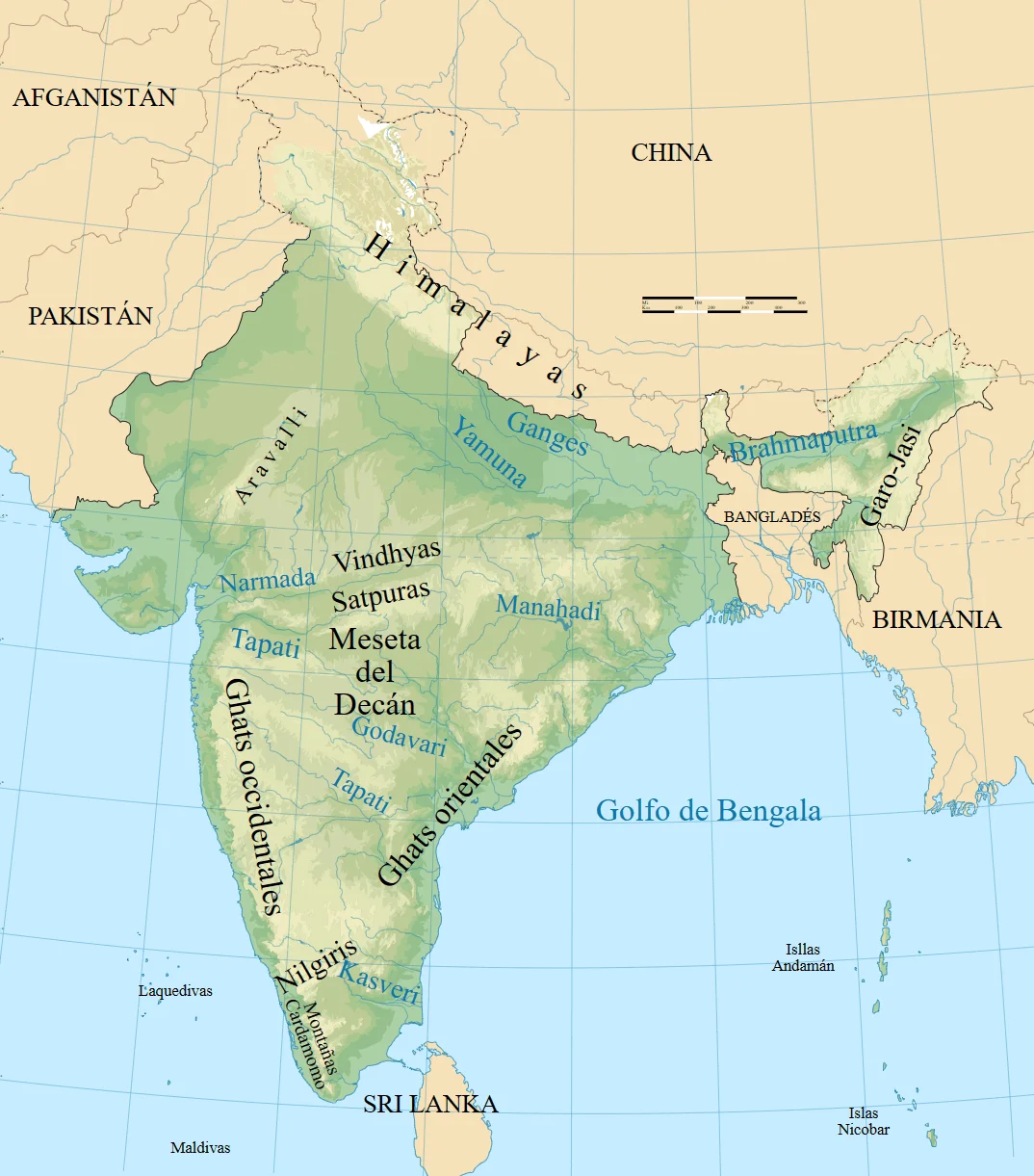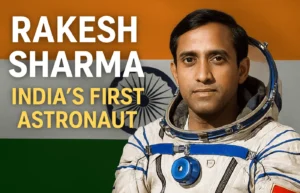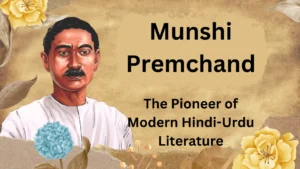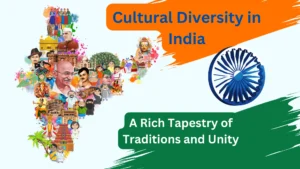India
Rich Heritage and Contemporary Narratives
Introduction to: A Land of Diversity
India, positioned as the seventh largest country globally in terms of land area is a vibrant and diverse nation, with a fascinating cultural heritage and a multitude of traditions. The Asian country of India is renowned for its borders that connect it with neighboring nations thereby enhancing its geopolitical significance. In India you will find an array of landscapes and climate zones to cater to every traveler’s preference ranging from the Himalayas north, to the sun-drenched beaches down south.
Geographical Overview
India shares its borders with Pakistan, China, Nepal, Bhutan, Bangladesh, and Myanmar, showcasing its strategic location. Over the course of centuries India’s history and culture have been greatly influenced by its proximity, to various neighboring countries. Moreover, India boasts a geography encompassing everything from majestic snow-capped mountains to arid deserts lush rainforests and fertile plains. This wide array of landscapes holds significance and serves as a habitat for numerous wildlife sanctuaries, national parks and biodiversity hotspots. These natural havens not only enhance the country’s beauty but also play a vital role, in preserving its precious wildlife.
Historical Background
The ancient civilizations and the Vedic period played a role, in shaping civilization laying the groundwork for Hinduism one of the world’s oldest religions. Throughout history various medieval dynasties like the Mughals left a lasting impact on India showcasing how Islamic culture influenced art, architecture and society. However perhaps the pivotal chapter in India’s story is its fight, against colonial rule culminating in its independence in 1947.

Cultural Melting Pot
India’s cultural diversity is a blend of languages, faiths and celebrations. With a number of, over 1,600 languages spoken throughout the nation India truly stands out as a marvel. It’s a country where multiple religions harmoniously coexist, including Hinduism, Islam, Christianity, Sikhism, Buddhism and Jainism. Each religion brings its customs, traditions and festivals that collectively weave the enchanting fabric of Indian culture.
The culinary scene, in India is widely celebrated for its range of flavors and exquisite gastronomic offerings. From aromatic spices to mouthwatering street food, Indian cuisine offers a sensory explosion of taste and aroma. Each region in India has its culinary specialties, ranging from spicy curries of the north to tangy seafood delicacies of the coastal areas. The rich variety of Indian food is a reflection of its multicultural heritage and regional diversity.
Traditional attire in India is a vivid and colorful reflection of its artistic heritage. Traditional attire, in India ranging from the sarees donned by women to the turbans worn by men exemplifies the skill and meticulousness that has been inherited across generations. Indian art forms, like painting, sculpture and embroidery have thrived over time with each region adding its flair to the rich heritage of the nation.
Unveiling India's Architectural Marvels: A Historical Journey
India is home to a treasure trove of architectural marvels that span different eras and dynasties. From majestic forts to intricate temples, these historical structures provide a glimpse into India’s glorious past and its architectural prowess.
Majestic Forts and Palaces
Rajasthan, a state located in the part of India is home, to some truly magnificent forts. These incredible structures, like the Amber Fort in Jaipur and the breathtaking Mehrangarh Fort in Jodhpur feature designs, intricate carvings and stunning panoramic views of the surrounding landscapes. Once serving as residences these forts now welcome visitors who can catch a glimpse of the opulence and grandeur that defined ancient times.
The Mughal dynasty has left an impact on India’s heritage. The palaces crafted by the Mughals including the Taj Mahal in Agra and the majestic Red Fort, in Delhi are shining examples of their vision and exceptional craftsmanship. These grand structures are adorned with intricate marble inlays, beautiful gardens, and serene water bodies, reflecting the Mughals’ love for beauty and symmetry.
Located in the region of India, the splendid palaces of South India exemplify a fusion of Dravidian and European architectural styles. One such example is the Mysore Palace, in Karnataka renowned for its design and lively interiors, which stands as a symbol of the legacy left behind by the Wodeyar dynasty. The Padmanabhapuram Palace in Kerala, with its intricate wooden carvings and traditional Kerala architecture, transports visitors to a bygone era of elegance and regality.
Temples - Epitome of Religious Devotion
India is often called the land of temples because its society is deeply rooted in devotion. The famous temples, in North India like the Kashi Vishwanath Temple in Varanasi and the Golden Temple, in Amritsar draw millions of worshippers annually. These temples are not just wonders but also serve as spiritual hubs that embody the core beliefs of Hinduism and Sikhism.
South Dravidian temples exhibit carvings and majestic entrances. The Brihadisvara Temple in Thanjavur, dedicated to Lord Shiva, is a UNESCO World Heritage Site and stands as a testament to the architectural brilliance of the Chola dynasty. The Meenakshi Amman Temple in Madurai, with its magnificent gopurams (towering gateways) adorned with colorful sculptures, is a visual spectacle that captivates visitors with its grandeur.
The ghats of Varanasi, situated on the banks of the sacred Ganges River, hold immense spiritual significance for Hindus. The ghats serve as bathing and cremation sites and are believed to cleanse worshippers from their sins. The spiritual aura and the cultural practices associated with the Varanasi ghats make it one of the holiest places in India and a must-visit for spiritual seekers.
UNESCO World Heritage Sites
India holds a wealth of UNESCO World Heritage Sites, each providing a window into its history and cultural legacy. The iconic Taj Mahal, in Agra often hailed as the embodiment of love stands as a testament to prowess and breathtaking aesthetics. The Ellora and Ajanta Caves in Maharashtra, with their breathtaking rock-cut monuments and intricate paintings, showcase the rich artistic heritage of ancient India. The ancient ruins of Hampi, in Karnataka, which used to be the capital of the Vijayanagara Empire stand as a testament to the magnificence and architectural skills of an era.
Exploring India’s Biodiversity Hotspots: Flora and Fauna
India is renowned for not its cultural heritage but also its abundant variety of plants and animals. The country takes pride in its parks, wildlife sanctuaries and areas of biodiversity which provide habitats, for numerous species, including many that are endangered or vulnerable.
Thriving National Parks and Wildlife Sanctuaries
Ranthambore National Park in Rajasthan is renowned for its population of Royal Bengal Tigers. This park provides a habitat where these majestic creatures can be observed in their splendor and strength. Kaziranga National Park in Assam is home to the endangered one horned rhinoceros while Gir Forest in Gujarat serves as the refuge for the endangered Asiatic lions. These protected areas play a role in conservation efforts ensuring the preservation of India’s heritage.
Diverse Avian Life
Bharatpur Bird Sanctuary in Rajasthan also recognized as Keoladeo National Park is a delight, for birdwatchers. It harbors a variety of bird species, including birds that flock to the sanctuary during winter months. The sanctuary serves as a place, for these birds and provides a special chance to observe their colorful feathers and delightful melodies.
The peacock, which is recognized as the bird of India occupies a position, in Indian culture and symbolism. With its feathers and elegant movements, the peacock is widely regarded as a representation of beauty, grace and spirituality, in the realm of legends and mythology.
The Western Ghats in India are a hotspot for spotting endangered bird species. The mountains, in this region are beautifully covered with forests and provide a habitat for various bird species that can only be found here making it truly unique, in the world. Birdwatching enthusiasts can witness the stunning Malabar trogon, the vibrant Indian pitta, and the elusive Nilgiri flycatcher, among many others, in their natural habitat.
Indigenous Plant Species and Medicinal Herbs
India is famous, for its range of plants and herbs including the neem tree. Known as the “wonder tree ” it has been a cornerstone of medicine for centuries. The neem tree is highly valued for its qualities believed to possess anti-inflammatory, antiviral and antibacterial effects.
Another notable ingredient in cuisine is turmeric, which holds significance in Ayurveda, India’s ancient medical system. Turmeric has gained popularity as a remedy due, to its known properties that include being inflammatory, antioxidant and antimicrobial.
The spice markets in India are renowned for their spices like cardamom, cinnamon and cloves. These spices do not enhance the taste and richness of cuisine but also have a long standing history, in Ayurvedic medicine. It is believed that they assist in digestion boost immunity and offer health advantages.
India's Economic Growth and Technological Advances
In recent decades, India has witnessed significant economic growth and technological advancements, paving the way for its emergence as a global power in various sectors.
Rising Global Influence as an IT Powerhouse
India’s booming IT industry has gained recognition establishing the country as a center, for information technology services. Known IT service companies such, as Tata Consultancy Services (TCS), Infosys and Wipro have established their reputation not in India but also globally. Bangalore, often referred to as the Silicon Valley of India has become a center, for technology and innovation attracting both established corporations and emerging startups.
The introduction of e commerce has transformed the shopping habits of Indians with online platforms offering an array of products and services. Furthermore digital payment systems have become increasingly popular presenting convenient alternatives to cash transactions. With the governments focus on inclusion millions of Indians now have access, to services contributing to India’s economic growth and technological advancements.
Manufacturing Hub and Entrepreneurial Spirit
India’s ‘Make in India’ campaign is focused on boosting manufacturing and establishing India as a leading manufacturing center. The nation has witnessed a rise, in endeavors spanning diverse sectors witnessing the emergence of thriving startups in technology, healthcare, education and finance. Indian entrepreneurs have exhibited resilience, innovation and an unwavering entrepreneurial drive playing a role, in India’s growth narrative.
India’s economy is greatly influenced by its handicrafts and talented artisans. These skilled craftsmen skillfully produce an array of goods, including textiles, jewelry, pottery and woodwork. These handicrafts beautifully showcase India’s heritage and also serve as a means of livelihood, for countless artisans, throughout the nation.
Agricultural Sector and Green Revolution
India’s agricultural sector has played a role, in the country’s economy for centuries providing sustenance to millions of people. In the 1960s a series of reforms known as the Green Revolution were implemented, which greatly boosted productivity and transformed India into a self reliant nation in terms of food production. The introduction of yielding crop varieties along with farming techniques resulted in significant increases in crop yields and brought about an agricultural revolution across India.
However, despite these achievements the agricultural sector in India faces challenges. Climate change, water scarcity and shrinking land all pose threats to the sustainability of agriculture. Nevertheless, India has been at the forefront of embracing farming practices like farming and precision agriculture to tackle these challenges and ensure a more sustainable future.
Moving on to another aspect of India’s culture – its film industry – we find Bollywood taking center stage. Bollywood is renowned as the world’s film industry captivating audiences with its mix of music, dance, drama and romance. It holds a place, in the hearts of millions.
Bollywood - The World's Largest Film Industry
Bollywood, situated in Mumbai produces a number of movies every year catering to a range of viewers both, within India and internationally. The growth of Bollywood has mirrored the cultural and political transformations in India making it an inseparable part of the nation’s identity. Indian cinema has played a role in shaping culture influencing fashion, music and even societal norms. Bollywood celebrities enjoy popularity. Have gained global recognition for their talent. Artists such as Amitabh Bachchan, Shah Rukh Khan and Priyanka Chopra have overcome barriers. Left their mark in Hollywood bridging the divide between Western cinemas.
India’s cinematic richness extends beyond Bollywood: regional film industries across states also contribute to the mosaic of Indian cinema. Tamil, Telugu, Malayalam, Bengali films and more possess their styles and narratives that enchant audiences, with their storytelling techniques. However, despite these achievements the agricultural sector in India faces challenges. Climate change, water scarcity and shrinking land all pose threats to the sustainability of agriculture. Nevertheless, India has been at the forefront of embracing farming practices like farming and precision agriculture to tackle these challenges and ensure a more sustainable future.
Moving on to another aspect of India’s culture – its film industry – we find Bollywood taking center stage. Bollywood is renowned as the world’s film industry captivating audiences with its mix of music, dance, drama and romance. It holds a place, in the hearts of millions.
Art House Cinema and Independent Filmmakers
While Bollywood is known for its commercial entertainers, India’s film landscape also encompasses a vibrant art house cinema scene, with independent filmmakers exploring unconventional narratives and pushing artistic boundaries. These filmmakers focus on telling stories that address social issues, challenge conventions, and provide thought-provoking commentary on contemporary society. These independent films often receive recognition and praise not in India but internationally. Movies, in languages like Malayalam films from Kerala and Marathi movies from Maharashtra have been creating a buzz in times. These films provide a departure, from mainstream cinema. Highlight the cultural abundance and variety of stories that India has to offer. These films belong to various categories such as:
- Bollywood’s Emerging Artistic Films: Bollywood, often associated with extravagant song and dance sequences, is also witnessing a shift towards more artistic and content-driven films. Independent filmmakers and actors are gaining recognition for their unconventional storytelling, pushing the boundaries of traditional Indian cinema.
- Regional Language Films Making Waves: The influence of Indian cinema extends beyond Hindi-language films. Regional films, such, as Tamil, Telugu, Marathi and many others are gaining recognition. These movies offer a glimpse into the tapestry of culture and their narratives often strike a chord with audiences worldwide.
- International Film Festivals Showcasing Indian Talent: Indian cinema has gained prominence at international film festivals, with Indian films regularly earning accolades. These festivals provide a platform for Indian talent to shine on the world stage, breaking cultural barriers and fostering cross-cultural understanding.
Influence of Indian Cinema on Fashion and Music
- Bollywood Fashion Trends and Influencers: Bollywood has a profound impact on fashion trends, with actors and actresses often setting the stage for popular styles. From iconic outfits to traditional attire, the Indian film industry influences fashion choices not only within India but also across the globe.
- Fusion Music – A Blend of Traditional and Contemporary: Indian cinema’s influence on music is equally profound. The fusion of traditional and contemporary music in Indian films has given rise to a unique genre. Composers and musicians experiment with a diverse range of musical elements, making Indian music a global sensation.
- Choreography and Dance as Cultural Expressions: Dance is an integral part of Indian cinema. Bollywood dance numbers are not only known for their energetic performances but also for their cultural expressions. They introduce audiences to various Indian dance forms, such as Kathak, Bharatanatyam, and Bhangra, creating an appreciation for these art forms worldwide.
Summary: Unraveling the Essence of India
In summary, Indian cinema is a vibrant and diverse force, encompassing emerging artistic films, regional language gems, and international recognition. Its influence extends to fashion, music, and dance, enriching these industries with its cultural essence. India’s diversity and cultural attractions are unveiled through its cinema, making it a potent ambassador of Indian heritage to the world.
POSTS

Rakesh Sharma – India’s First Man in Space
Introduction When the name Rakesh Sharma is mentioned, it instantly evokes pride and nostalgia for millions of Indians. A decorated Indian Air Force (IAF) Wing

Abdul Hamid: The Tank Destroyer Who Changed the Course of the 1965 War
Introduction In the history of India’s military, some names endure because they are indelibly marked as representations of bravery and selflessness. Among them, Company Quarter

Chenab Rail Bridge: World’s Highest Railway Bridge and India’s Engineering Marvel
Introduction Above the Himalayas Rises India’s Tallest Steel Marvel – The Chenab Rail Bridge Towering boldly at 359 meters above the Chenab River, the Chenab

Captain Mahendra Nath Mulla: The Naval Hero Who Chose Honor Over Survival
Introduction: A Legacy That Commands the Sea “When the sea swallowed INS Khukri on December 9, 1971, Captain Mahendra Nath Mulla stood tall—not in retreat,

Manmohan Singh: The Visionary Economist and India’s Silent Leader
Introduction Manmohan Singh’s Significance in Indian History Manmohan Singh, one of India’s most distinguished statesmen, occupies a unique place in the nation’s modern history. Born

Shyam Benegal: The Architect of Indian Parallel Cinema and His Lasting Impact
Introduction Shyam Benegal, often regarded as one of the most pioneering and transformative figures in Indian cinema, was a filmmaker, storyteller, and visionary whose work

Sharda Sinha: The Melodious Voice of Bhojpuri and Maithili Folk Music
Introduction Sharda Sinha, often regarded as the “Bihar Kokila” or the “Voice of Chhath Puja,” is a celebrated figure in Indian folk music, particularly for

Munshi Premchand: The Pioneer of Modern Hindi-Urdu Literature
Introduction Brief Overview of Munshi Premchand Munshi Premchand, born as Dhanpat Rai Srivastava on July 31, 1880, in Lamhi, a small village near Varanasi, is

Cultural Diversity in India: A Rich Tapestry of Traditions and Unity
Introduction Brief Overview of India’s Cultural Diversity India is globally renowned for its immense cultural diversity, a hallmark that sets it apart from most other

Udaipur: Exploring the Rich Heritage and Modern Attractions from City of Lakes
Introduction Nestled in the northwestern state of Rajasthan, Udaipur is fondly known as the “City of Lakes.” This epithet is well-deserved, given the city’s picturesque

Marchula: A Hidden Gem of Uttarakhand and the Luxurious Stay at Corbett River Creek Resort & Spa
Introduction Marchula: A Serene and Picturesque Destination Marchula, a serene and picturesque destination, offers a unique escape for those yearning to reconnect with nature. Nestled

Agnibaan: Igniting the Future of Tailor-Made for Small Satellites
Introduction Agnikul Cosmos has ignited the skies with their remarkable achievement! Successfully launching the Agnibaan SOrTeD (Suborbital Technological Demonstrator) on 30th May 2024 at 0715

Model Code of Conduct: An Obligation of Election Commission of India to ensure Free and Fair Elections
Introduction Importance of Democratic Elections in India India, the world’s largest democracy, prides itself on the periodic conduct of free and fair elections. Democratic elections

Sam Manekshaw: The Architect of India’s Military Triumphs
Sam Hormusji Framji Jamshedji Manekshaw, revered as one of India’s greatest military leaders, left an indelible mark on the nation’s history through his exceptional leadership

Sonam Wangchuk: A Visionary Mind behind Numerous innovations
Introduction Sonam Wangchuk, a visionary innovator hailing from the serene landscapes of the Indian Himalayas, is a name synonymous with transformative change and sustainable solutions.

Citizenship Amendment Act, 2019: A Closer Look at Provisions, Criticisms, and Recent Updates
Introduction The Central government officially announced the rules for the implementation of Citizenship Amendment Act, 2019 on 11th March,2024, marking a significant milestone approximately four

Pankaj Udhas: A Journey Through the Ghazal Maestro’s Life and Legacy
Introduction Pankaj Udhas born on 17 May 1951 remains an indelible figure in the annals of Indian music, celebrated for his poignant ghazals and soulful

Ameen Sayani: A Voice that Echoes Through Time
Introduction Ameen Sayani was an iconic figure in the realm of Indian radio. He was born on 21st December,1932. His resonant voice and unique style

Nathuram Godse: A Coward Who Assassinated the Saint
Introduction The teachings of Mahatma Gandhi, India’s Father of the Nation, on nonviolent philosophy, peace, and independence have left a lasting impact. He led India

Karpoori Thakur: A Compelling Journey of Life and Legacy
Introduction This is a name that many people in India regard as very important. The Indian government, on the 75th anniversary of Independence Day, awarded
